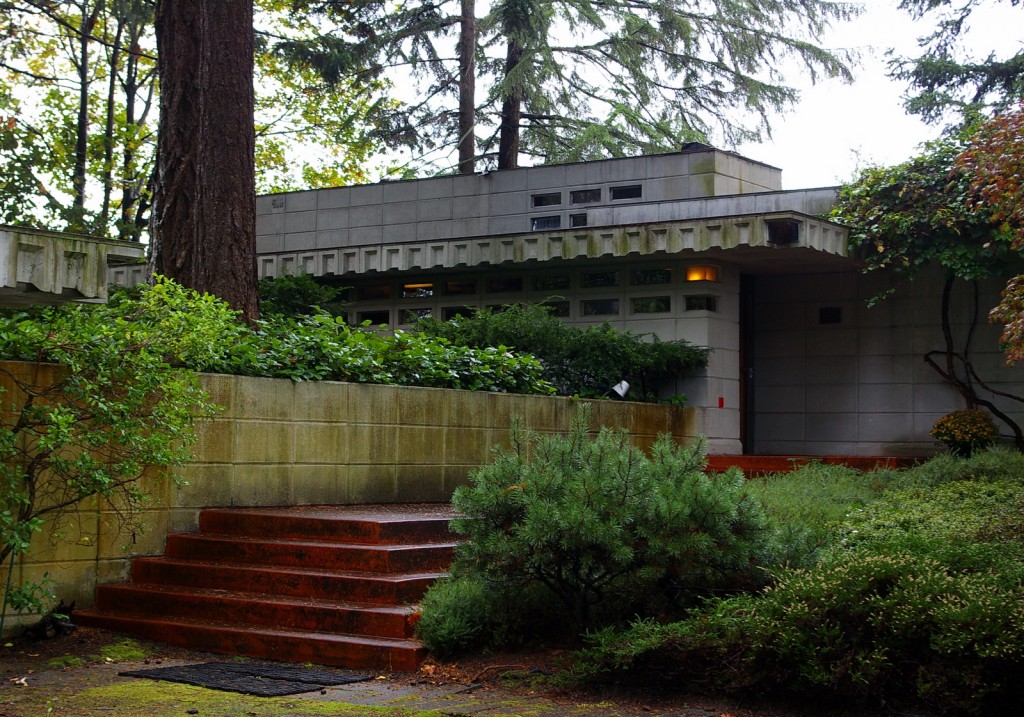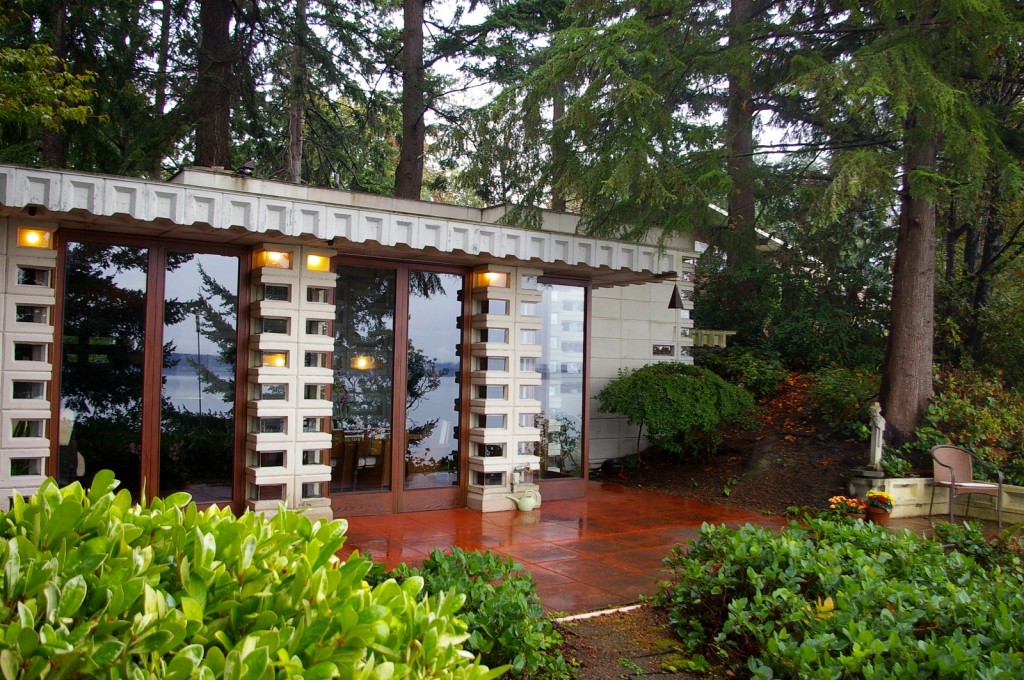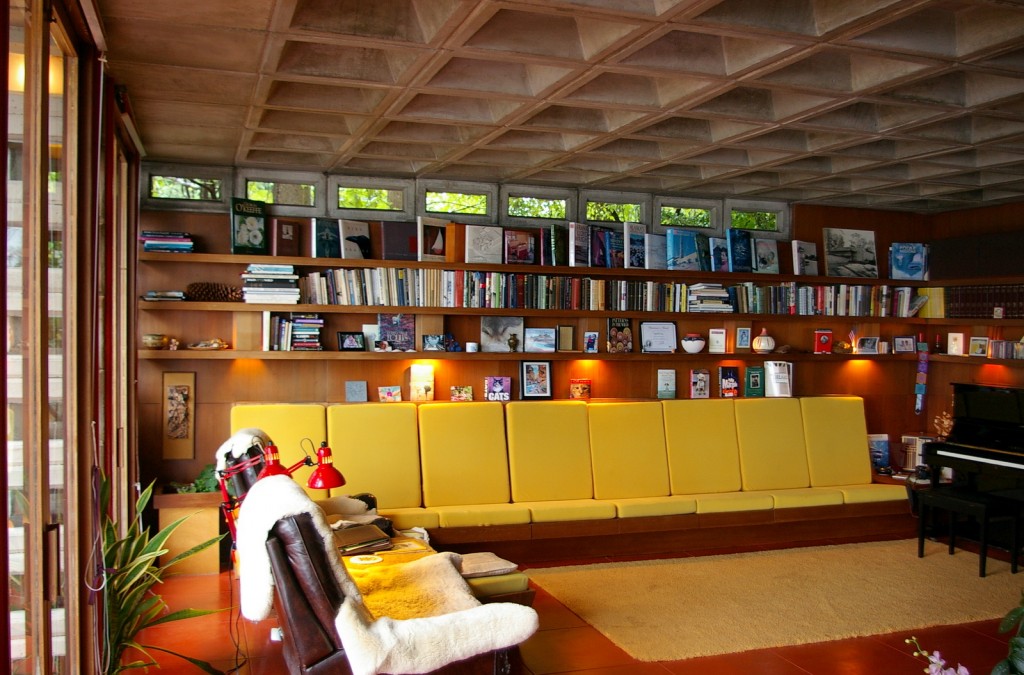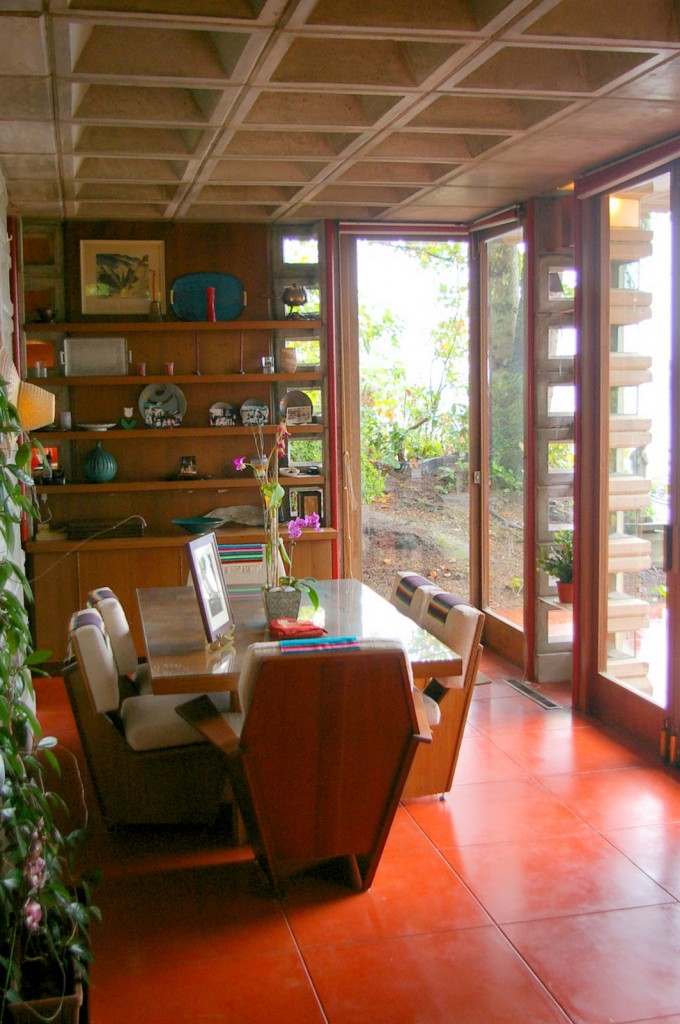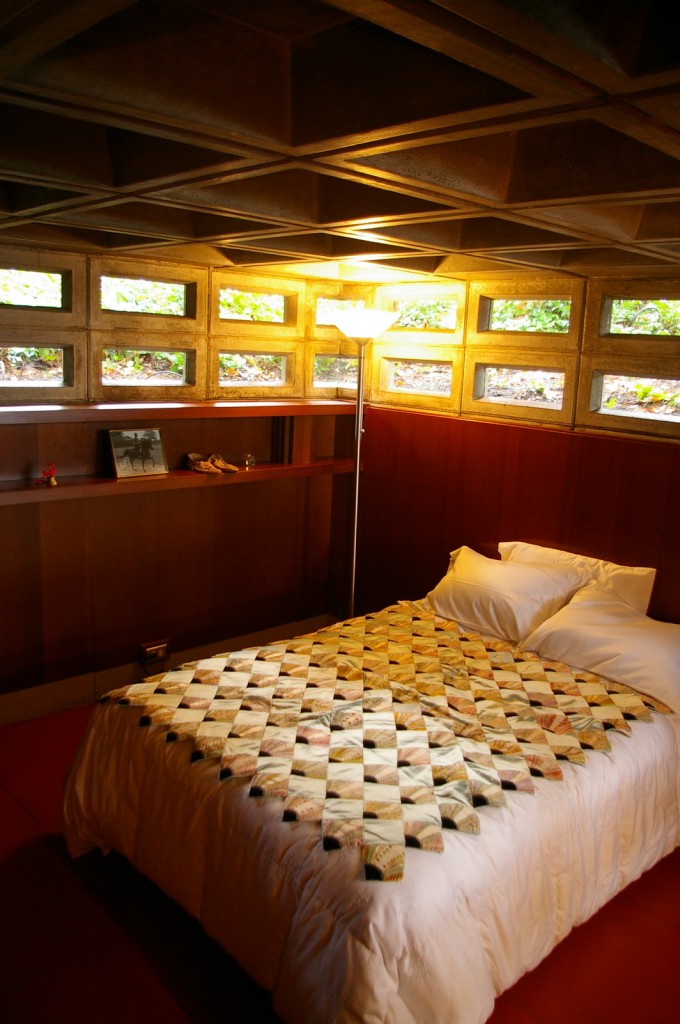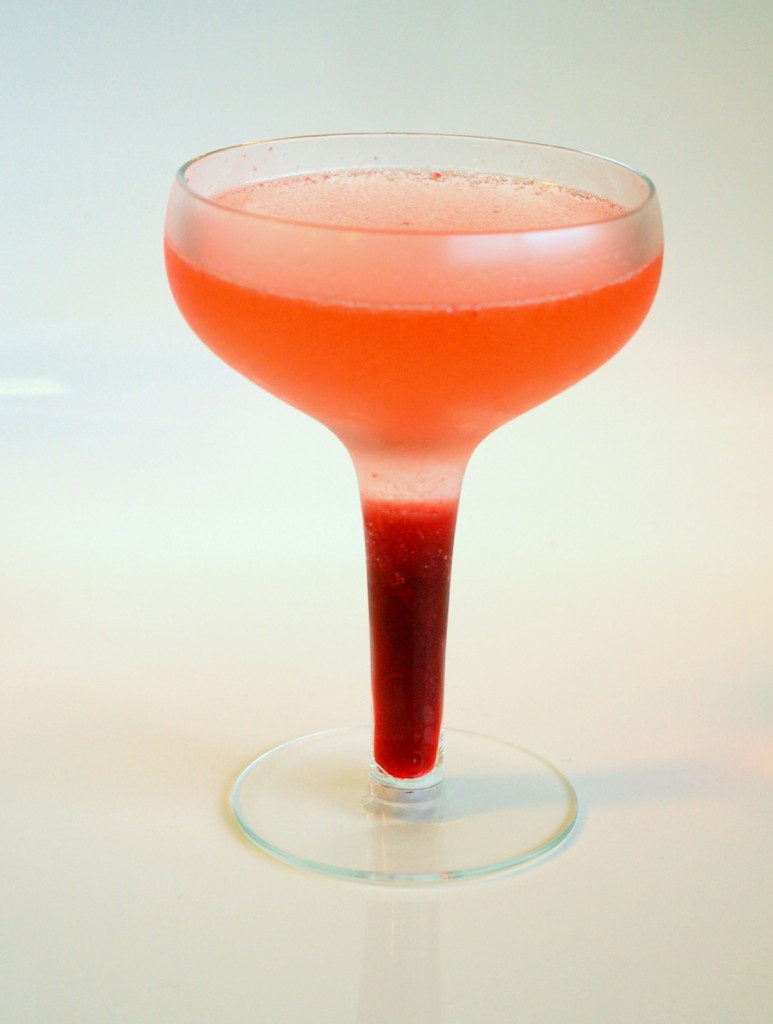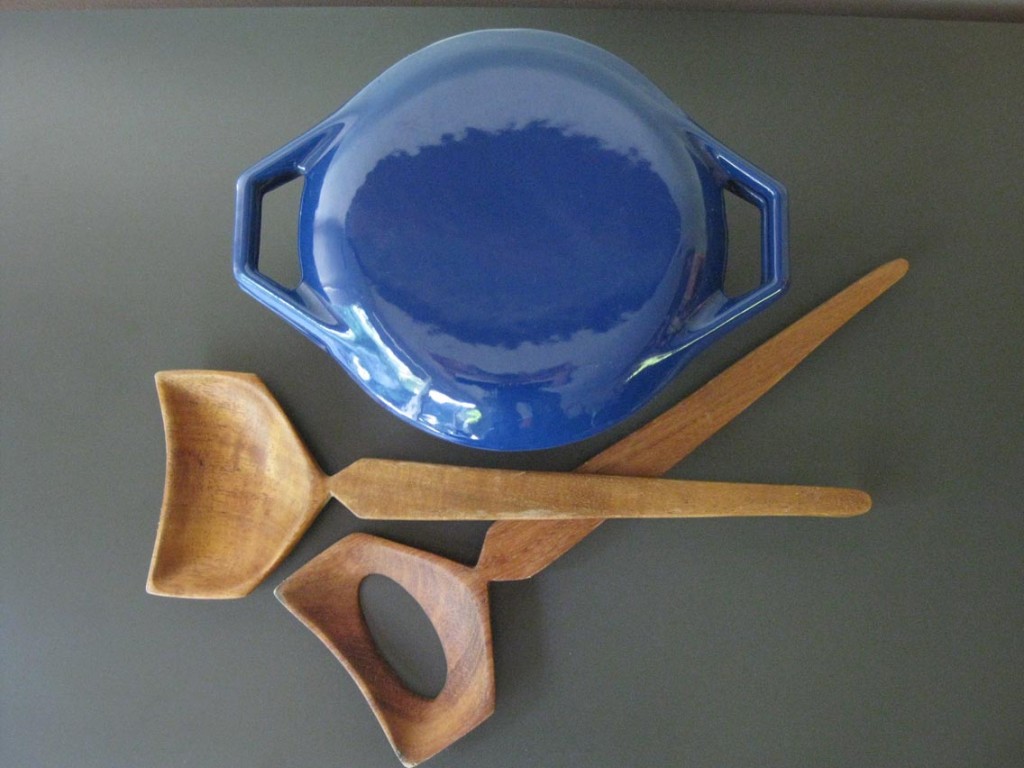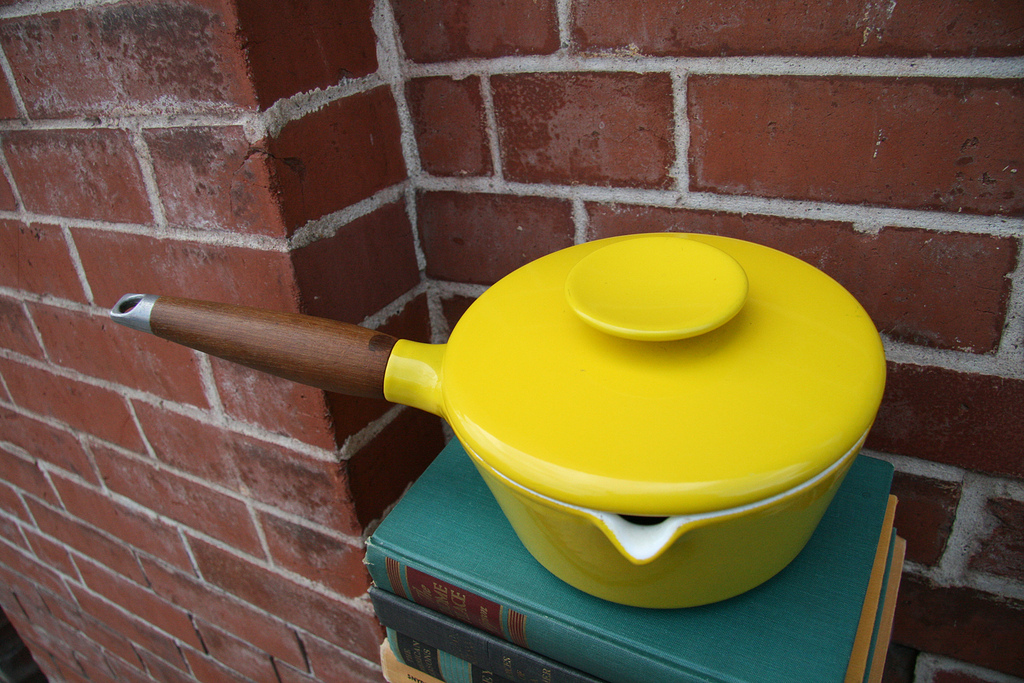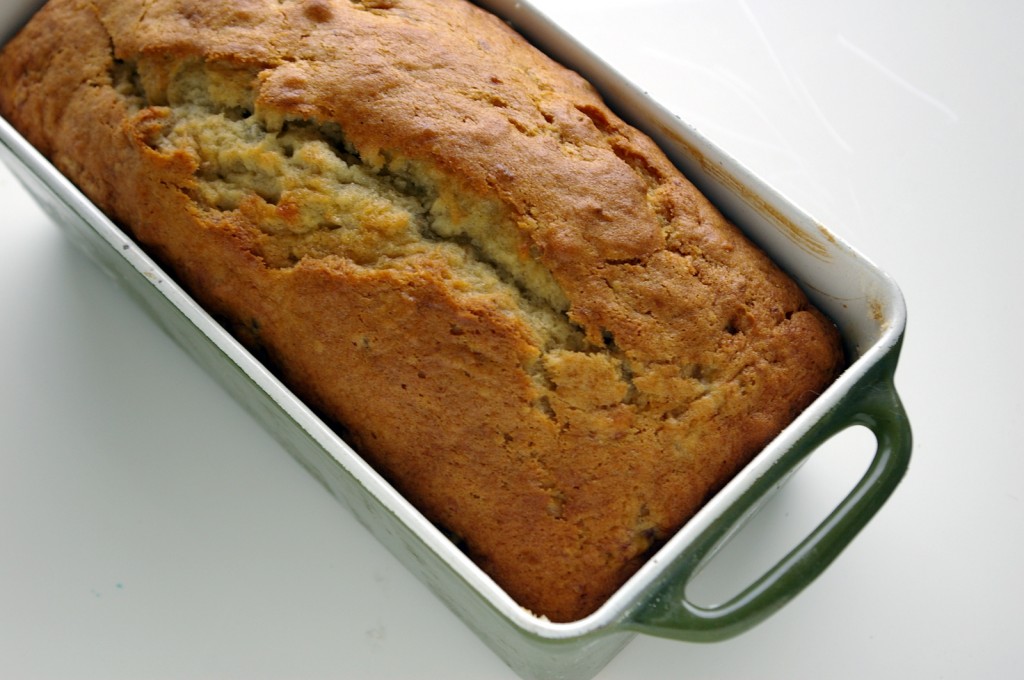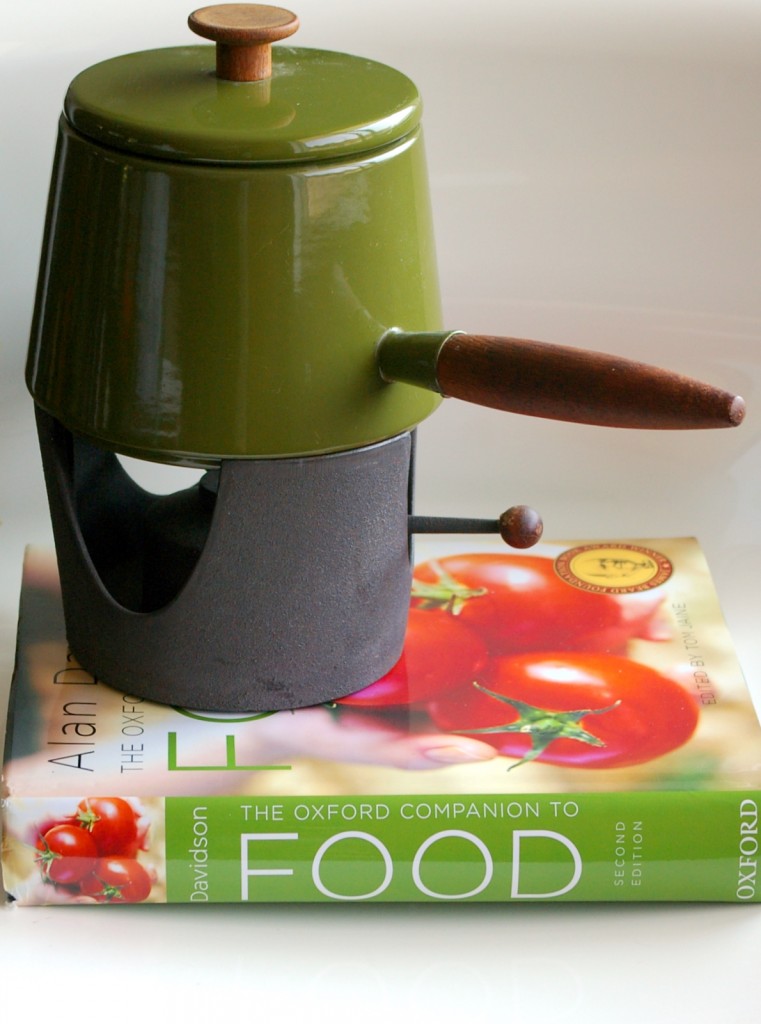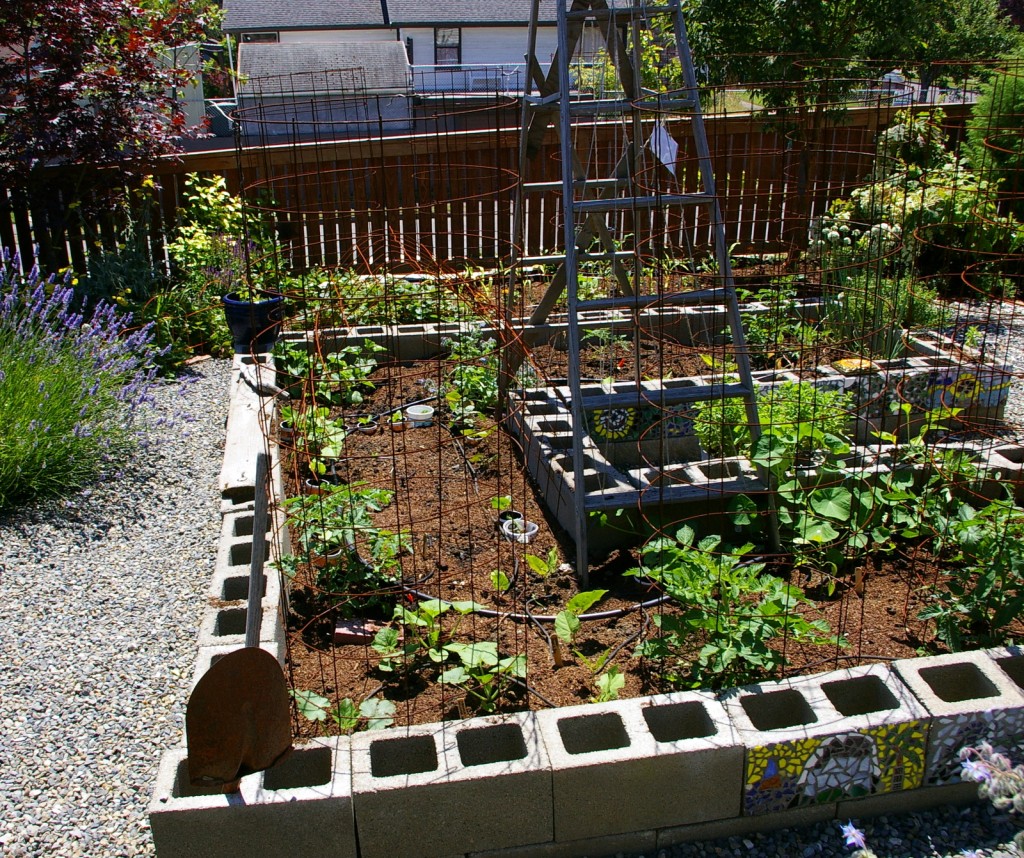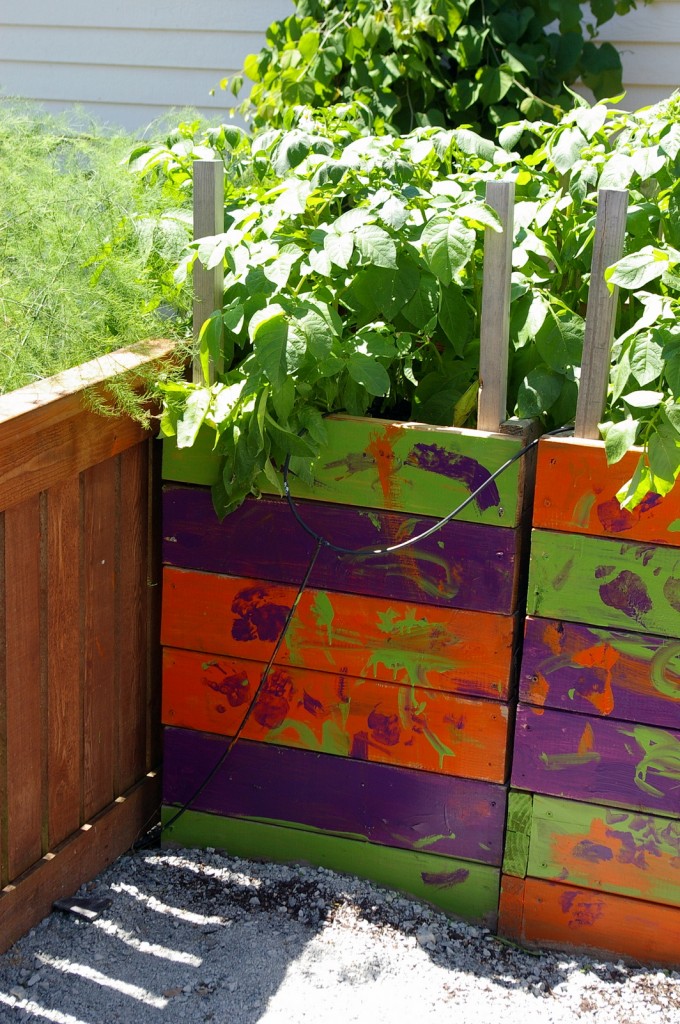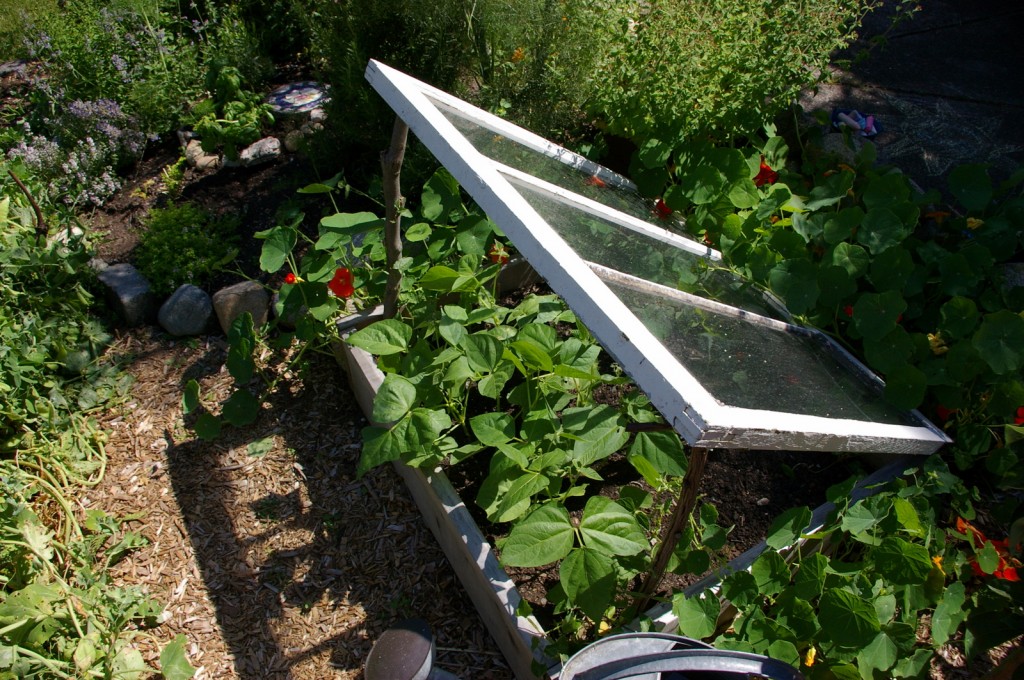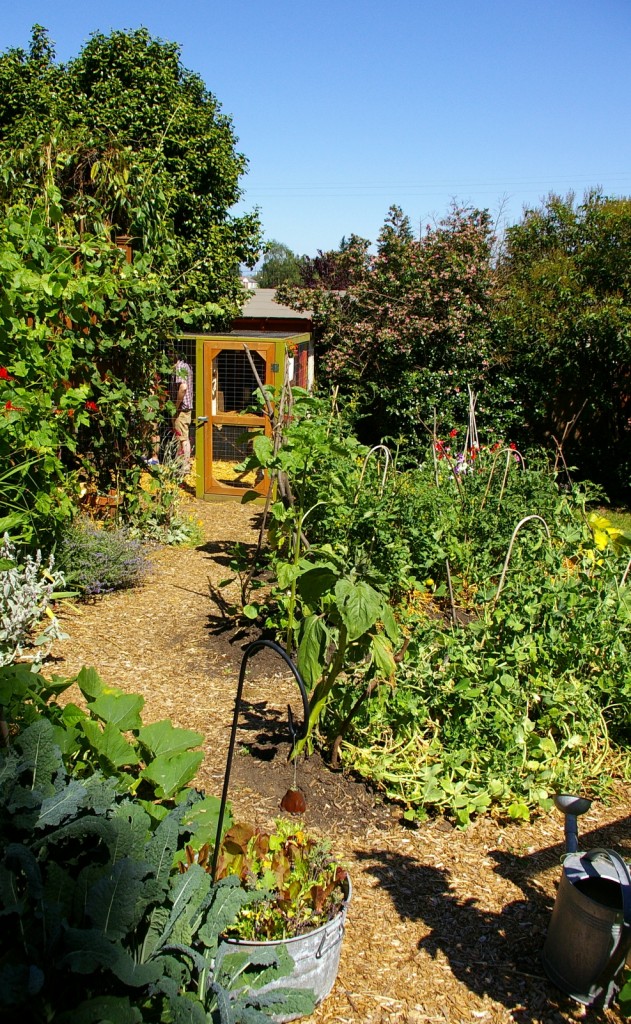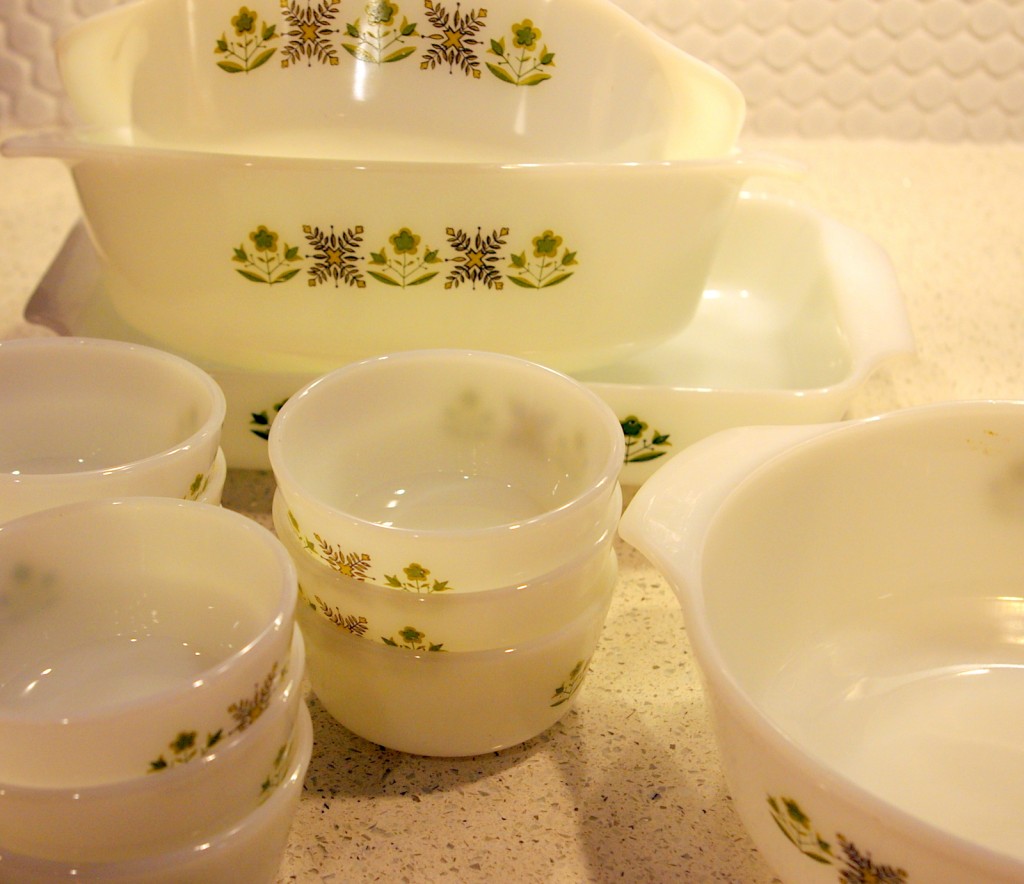Posts in Category: Life
The Tracy House
On Friday evening a very frantic Kevin called me about a chance to have a tour of the Tracy House, one of three Frank Lloyd Wright houses in Washington and, of course, I jumped at the chance. Â The house, as it turns out, is only a 10 minute drive from our neighborhood in West Seattle, so after our Saturday morning estate sales, we hopped in the car and drove to Normandy Park, Washington.
Part of this house’s charm was it’s amazing ability to blend into the background. Â Concrete blocks peek around pine trees and ferns, suggesting that a beautiful house is just around the corner.
Given the size of the trees in front, I would bet that the house was built around them, which is very much in keeping with Wright’s attention to detail.  The green, red, and grey palate was another design element that ran through the entire property–as was the integration of the squares of concrete with the green vertical lines of the trees and the red horizontal lines of the stairs.  All this harmony made for a perfect blend of natural and man-made elements.
The Tracy’s commissioned the house in 1955 and knew they wanted to live there for the rest of their life. Â They saved money and laid the concrete bricks themselves to Wright’s specifications. Â According to our tour guide, they loved to sit in their chairs and read in the evenings, and I have to say, the living room was one of the most inviting I’ve seen. Â The built-in soda and redwood bookcases gave the room a cozy feeling.
Like many of Frank Lloyd Wright’s houses, he also designed dining furniture, and the Tracy House is no exception. Â The long dining table fit perfectly into the dining space. Â It would be a perfect place to eat and watch the ocean below.
The concrete blocks formed the ceiling throughout the house, including in the three bedrooms. Â The bedrooms and hallway had very low ceilings, probably around 7 feet, maybe even less. Â Even though I could easily touch the ceiling in the bedrooms (I’m 6’1, so it wasn’t that hard!) the combination of the cool grey of the concrete and the warm red of the walls and floor really gave the space a cozy rather than claustrophobic feel.
It was a wonderful Saturday! Â The house will go up for sale soon, but sadly Kevin and I will not be on the list of buyers. Â It was, however, an amazing treat to be given free reign of the house for an hour! Â I think that we’ll definitely be visiting more Frank Lloyd Wright houses in the future!
And she’s back…
Here in Seattle, autumn is a fickle season.  Yesterday, it was beautifully sunny and I lounged on the porch with a beer, letting the sun warm my shoulders.  Today, it’s windy and dark and I’m curled up with a cup of Noël à Vienne tea and a blanket.  I’m feeling a bit fickle too now that my dissertation is complete and I’ll be filing soon.  My etsy shop has taken over a large chuck of my time, so much so that my blogging completely fell to the wayside.  In fact, the shop just had its 100th sale, if you can believe it!
Also, my priorities for the blog have changed a little since I started this blog back in February. Â My love for vintage recipes continues, but I’m also interested and fascinated by 1960s design and housewares. Â So you might see Bit of Butter morph a little in the coming weeks into a blog that’s focused more generally on design, recipes, life, and other things. Â No one thing defines us, after all. Â So sit back, tape a sip of champagne, and enjoy the ride! Â (And yes, I’ll be posting about this amazing champagne cocktail soon!)
A Few of My Favorite Things: Michael Lax for Copco
Well, folks, I just turned in a draft of my completed dissertation, so I will be back to blogging more regularly very  soon.  Lately though, I’ve had a ‘come to jesus’ moment in regards to my bursting kitchen shelves.  Do I need 20 coffee mugs just because I think they’re cute?  Are my 8 wooden spoons of various shapes and sizes really getting enough use?  And don’t even get me started about pots and pans. My cupboard is a no-(wo)man’s land of haphazardly stacked Calphalon and Le Creuset–to say nothing of the lids, which are stuck in the hinterlands, behind all the pots.
Those are just my daily-use pans.  I have a small collection of vintage kitchen-wares, like a few Kobenstyle dutch ovens that are just too fragile for me to use and thus are semi-artfully grouped on a hutch gathering dust under their beautiful, enameled exteriors.
What is a girl to do, I ask you? Â I’ve come up with a solution that makes my cupboards and my aesthetic sense happy: vintage enameled cast-iron! Â Even though Dansk Kobenstyle is beautiful (oh, those handles!), it’s not designed to take a beating in the kitchen. Â You’ll find that most Kobenstyle has chips in the enamel because it’s not heavy cast-iron. Â Not to say that enameled cast-iron doesn’t chip, but it’s just sturdier stuff, which is better for someone like me who cooks at least one meal each day on the stove.
Vintage cast-iron comes in many different shapes and forms.  Yes, there are the very practical solutions like Lodge and other makers of plain cast-iron pots.  Vintage Le Creuset and Descoware are both readily available and reasonably affordable.  But to my mind, the best marriage of function and style has to be Michael Lax for Copco.  Lax started designing enameled cookware for Copco in 1962 and continued through the sixties and seventies.  (He’s also responsible for designing one of my favorite Lightolier lights ever, the Lytegem.)
So what makes his designs stand out for me? Â It’s a blend of form and function. Â Take his dutch oven for instance. Â Even modern-day Le Creuset pots have a plastic knob that will melt if your oven is too hot. Â Not a problem for the Michael Lax dutch oven. It has two sturdy handles and no knobs of which to speak. Â Not only is this design more streamlined over all, it’s perfect for applications requiring a 400 degree oven! Â (It has always bugged me that the standard lid on Le Creuset dutch ovens is plastic and can melt if the oven is turned up too high.)
A few months back I purchased a Michael Lax bread pan for making quick breads and the like. Â At first I was worried that the pan wouldn’t work well since it was so heavy, but it’s the best bread pan I’ve ever used! Â After it’s time spent in the oven, even the bottom of my banana bread has a lovely little brown crust. Â I’m telling you folks, I think I’m in love!
Cookbook Round Up!
My birthday was earlier this month and, as always, I received some amazing gifts from Kevin. Â Most of these were food-related, so I wanted to share!
I’ve been wanting the The Oxford Companion to Food (2nd Edition) for a long while. Â It’s one of the best resources for food history and it’s helped me with many of my posts. Â On top of my new tome is my (new to me) Copco fondue pot, designed by Michael Lax. Â I cannot wait to make some fondue in my new pot!
In other (unrelated) news, I’m finishing up the introduction to my dissertation and generally wrapping things up, so posts may be a bit sporadic until I turn in my final draft. Â Thanks, dear readers, for being understanding!
Chard and Chicks…
Today was my neighborhood’s Edible Garden Tour and the Seattle Urban Chicken Coop Tour!  I know that this blog is primarily dedicated to vintage recipes, but community agriculture is something that Kevin and I are very passionate about, so we jumped at the chance to tour others’ gardens and chicken coops.  We’re hoping that our yard will be in good enough shape next spring that we can participate!  Here are some of the highlights:
This photo doesn’t do this backyard garden justice. Â It was a gorgeous, productive plot, full of all kinds of edibles. Â The overall layout to this backyard was wonderful, and it was almost all dedicated to edible plants! Â They even planted nasturtiums in the cinder blocks, which really looked beautiful.
We also fell in love with their ‘Tater Container’. Â Obviously, somebody had a lot of fun painting it!
One of our next stops was a true urban farm, with a small orchard, goats, chickens, bees, and greenhouses. Â The baby goats were very, very curious about Kevin’s hat!
Another favorite part of the tour was visiting the amazing urban gardens and chicken coop at the home of The Tangled Nest. Â It was probably our favorite stop along the tour because not only did they grow great vegetables and have beautiful chickens, it was also super-fun to chat with like-minded people.
I’m glad we’re not the only ones using old windows for some added heat for our beds.
The path to the chicken coop. Â Can you spot the kale? Â 🙂
All in all, this was a lovely experience. Â Kevin and I came home with many new ideas for our garden. Â We’re going to be making some major changes to our backyard, so we’re gathering as much data as possible, especially about which chicken breeds we should get.
The Story of Our House
A few of you commented on the ramekins I used in our last post. Â Where did they come from, you ask? Â They actually came from our house. Â Kevin and I moved to Seattle from Southern California almost two years ago. Â In the autumn of 2008, we started looking for a house, but–being the picky people we are–we couldn’t find one that was perfect. Â During this time, we drove past an estate sale and wandered in. Â The house was a wreck: it hadn’t been updated in 30 years, everything was threadbare and dirty, and I remember saying to Kevin “well, at least we’re not looking at this house. Â (Famous last words, trust me.) Â I found a box of Anchor Hocking casserole dishes and ramekins at this estate sale in the Meadow Green pattern, which was produced between 1967-1977.
To make a long story short, we bought the house a few months later and it became our threadbare and dirty house! Â Originally, Kevin and I were searching for a ‘time capsule’ house that had vintage style and didn’t need much work. Â Sadly, they were out of our price-range, so we had to make some major renovations to the house in order to turn it into a place we’d be proud to call home. Â But that’s the subject of another post–back to the ramekins!
An Island Weekend
As I mentioned last week, Kevin and I took a mini-holiday to San Juan Island, WA. Â I was lovely! Â As we hiked around the San Juan Island National Historical Park and Lime Kiln National Park, I was amazed at all the different textures around me. Â The lichen, budding flowers, peeling bark, driftwood–it was all so beautiful!
This post is part of Outdoor Wednesday! Â If you need a little outdoors in your life, please go visit some of the other participants!
